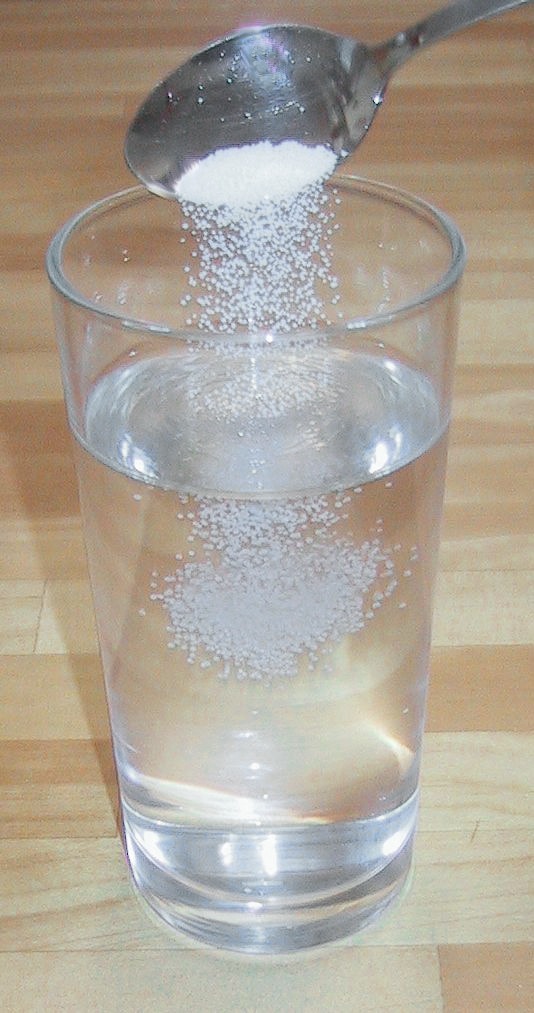What Is the Molality of a Solution in Which 3.0
Learning Objective
- Calculate the molality of a solution and explain how it is a colligative property
Key Points
- Molality is a property of a solution and is defined as the number of moles of solute per kilogram of solvent.
- The SI unit for molality is mol/kg. A solution with a molality of 3 mol/kg is often described as "3 molal" or "3 m." However, following the SI system of units, mol/kg or a related SI unit is now preferred.
- Since the volume of a solution is dependent on ambient temperature and pressure, mass can be more relevant for measuring solutions. In these cases, molality (not molarity) is the appropriate measurement.
Terms
- colligative propertyA property of solutions that depends on the ratio of the number of solute particles to the number of solvent molecules in a solution, and not on the type of chemical species present.
- molalityThe concentration of a substance in solution, expressed as the number of moles of solute per kilogram of solvent.
- intensive propertyA property of matter that does not depend on the amount of matter.
Measurements of Mass (Molality) vs. Volume (Molarity)
Molality is an intensive property of solutions, and it is calculated as the moles of a solute divided by the kilograms of the solvent. Unlike molarity, which depends on the volume of the solution, molality depends only on the mass of the solvent. Since volume is subject to variation due to temperature and pressure, molarity also varies by temperature and pressure. In some cases, using weight is an advantage because mass does not vary with ambient conditions. For example, molality is used when working with a range of temperatures.
Defining Molality
The molality, b (or m), of a solution is defined as the amount of substance of solute in moles, nsolute, divided by the mass in kg of the solvent,msolvent:
[latex]bM_{solute}=\frac{n_{solute}}{m_{solvent}}[/latex]
Molality is based on mass, so it can easily be converted into a mass ratio, denoted by w:
[latex]bM_{solute}=\frac{n_{solute}}{m_{solvent}} = \frac{w_{solute}}{w_{solvent}}[/latex]
Compared to molar concentration or mass concentration, the preparation of a solution of a given molality is easy because it requires only a good scale; both solvent and solute are massed, rather than measured by volume. In many weak aqueous solutions, the molarity and molality are similar because one kilogram of water (the solvent) occupies one liter of volume at room temperature, and the small amount of solute has little effect on the volume of the solvent.

Units
The SI unit for molality is mol/kg, or moles solute per kg of solvent. A solution with a molality of 1 mol/kg is often described as "1 molal" or "1 m." However, following the SI system of units, the National Institute of Standards and Technology, which is the United States' authority on measurement, considers the term "molal" and the unit symbol "m" to be obsolete, and suggests using mol/kg or another related SI unit instead.
Calculating Molality
It is easy to calculate molality if we know the mass of solute and solvent in a solution. Molality is an intensive property, and is therefore independent of the amount being measured. This is true for all homogeneous solution concentrations, regardless of if we examine a 1.0 L or 10.0 L sample of the same solution. The concentration, or molality, remains constant.
Calculating Molality Given Mass
If we mass 5.36 g of KCl and dissolve this solid in 56 mL of water, what is the molality of the solution? Remember that molality is moles of solute/kg per solvent. KCl is our solute, while water is our solvent. We will first need to calculate the amount of moles present in 5.36 g of KCl:
[latex]\text{ moles KCl} = 5.36 g \times (\frac{1 \text{ moles}}{74.5 g}) = 0.0719 \text{ moles KCl}[/latex]
We also need to convert the the 56.0 mL of water to its equivalent mass in grams by using the known density of water (1.0 g/mL):
[latex]56.0\ mL \times (\frac{1.0 g}{mL}) = 56.0\ g[/latex]
56.0 g of water is equivalent to 0.056 kg of water. With this information, we can divide the moles of solute by the kg of solvent to find the molality of the solution:
[latex]\text{ molality} = (\frac {\text{ moles}}{\text{kg solvent}}) = (\frac {0.0719 \text{ moles KCl}}{0.056\text{ kg water}})= 1.3\ m[/latex]
The molality of our KCl and water solution is 1.3 m. Since the solution is very dilute, the molality is almost identical to the molarity of the solution, which is 1.3 M.
Calculating Mass Given Molality
We can also use molality to find the amount of a substance in a solution. For example, how much acetic acid, in mL, is needed to make a 3.0 m solution containing 25.0 g of KCN?
First, we must convert the sample of KCN from grams to moles:
[latex]\text{ moles KCN} = 25.0 g \times (\frac {1 \text{ moles}}{65.1 g}) = 0.38 \text{ moles}[/latex]
The moles of KCN can then be used to find the kg of acetic acid. We multiply the moles by the reciprocal of the given molality (3.0 moles/kg) so that our units appropriately cancel. The result is the desired mass of acetic acid that we need to make our 3 m solution:
[latex]0.38 \text{ moles KCl} \times (\frac {\text{ kg acetic acid}}{3.0 \text{ moles KCl}}) = 0.12\text{ kg acetic acid}[/latex]
Once we have the mass of acetic acid in kg, we convert from kg to grams: 0.12 kg is equal to 120 g. Next, we use the density of acetic acid (1.05 g/mL at 20 oC) to convert to the requested volume in mL. We must multiply by the reciprocal of the density to accomplish this:
[latex]120.0 \text{ g acetic acid} \times (\frac {mL}{1.05 g}) = 114.0 \text{ mL acetic acid}[/latex]
Therefore, we require 114 mL of acetic acid to make a 3.0 m solution that contains 25.0 g of KCN.
What Is the Molality of a Solution in Which 3.0
Source: https://courses.lumenlearning.com/introchem/chapter/molality/